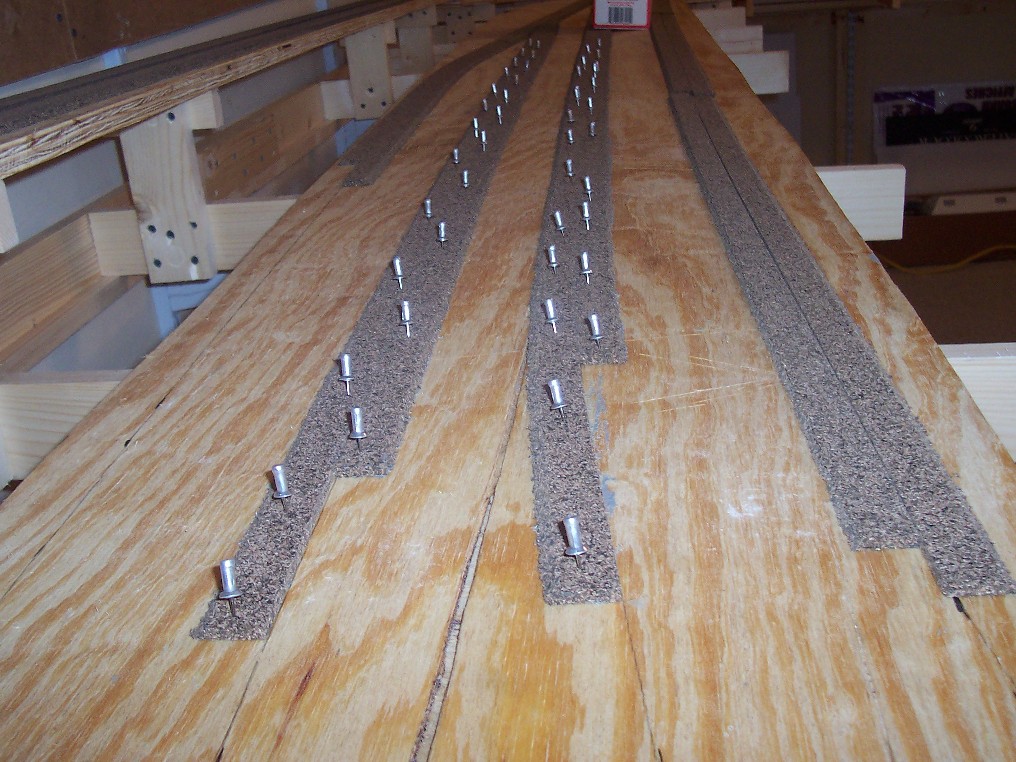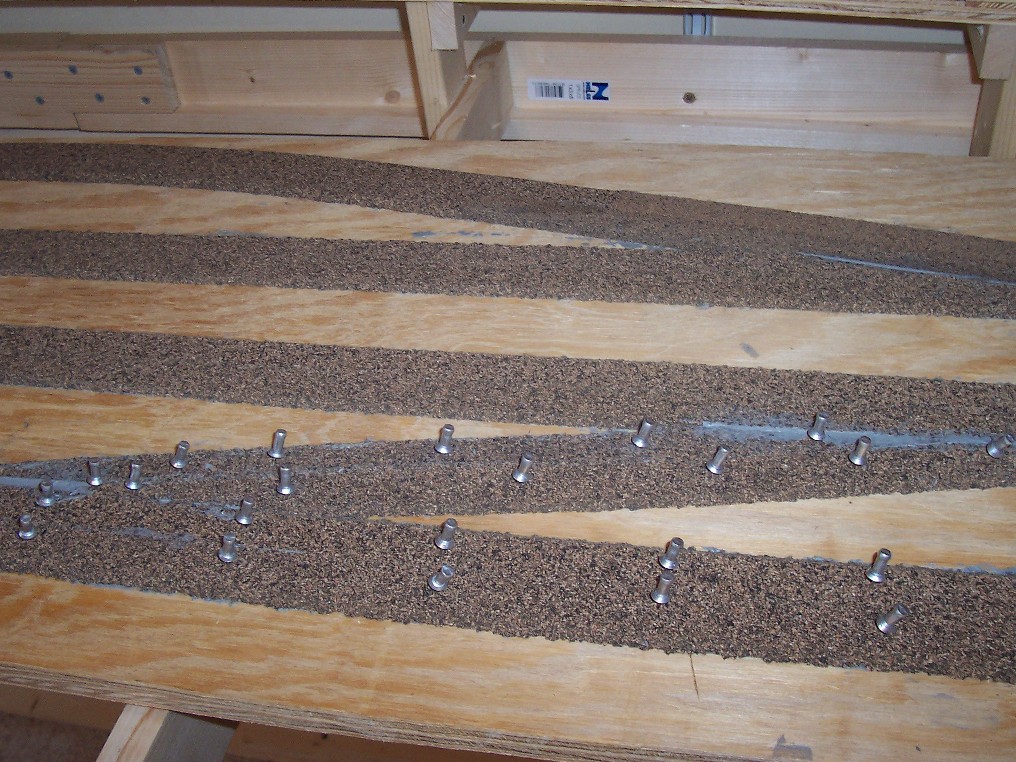New to model railroading. I have a layout setup, and now i want to start laying the cork roadbed. Having a lot of trouble with the curved track, getting roadbed to cut to where it looks good. I’m using a knife to cut the roadbed. I’m using long pins to hold down the roadbed, and it slips a lot also. I will be gluing the cork roadbed down to the benchwork at some point. Is it a good idea to cut the roadroad into short pieces to try and make it match the curve track. The roadbed does give a little. SO far i have been trying to use long pieces that match the track and it’s not working for me. Any ideas how to do this to make it work for me. Any advise would be appreicated. Thanks.
Trainman11,
I am assuming that you are using the 3’ lengths of HO cork roadbed that can be split down the middle and then set up on the sub-roadbed, e.g. plywood, foam, hardboard, etc. If this is the case I typically will scribe with a pencil the track alignments and curves onto the sub-roadbed first to make the centerline marks. And then I will run a 1/4" bead of gray laytex caulk onto this marked line for about 6’-9’, and then spread it out with a metal spatula to a smooth even consistency. Then I will take one side of the 3’ cork roadbed material and line it up the inside edge with the centerline area of the track alignment or curve. Then I take long push pins and insert them about every 4"-6" to hold the cork roadbed fast into the sub-roadbed. I then take the other piece of cork roadbed and line up the inside edge flush with the first one and attach the push pins to that one too. I keep adding cork roadbed until I get to the next section where I need to add more caulk and start the process over again.
Here are a few images of my cork roadbed process:
Classification Yard

Curved Turnout Area

Crossover Area

For more images you can view them on my Gallery Pages
Cheers,
Ryan
Welcome. Leave your peices as long as possible for fewer joints and cut them square. The cork will bend and stay in place once glued down, You will notice in SilverSpikes photos that the two halves of the cork are not even, this keeps the joints from being together and creating a bump. The other suggestion I would add is to get some sheet cork, cork tiles or you could buy the pre-cut peices to go under your turnouts. The sheet cork or tiles can also be used under yards, etc, where you don’t have drainage ditches between the tracks.
Have fun,
Are you using sheet cork? Or pre-cut ready made roadbed like Model Power?
Rotor
Great explaination Silver Streak, perfecty text book all the way. I know he’s new but that’s like the very basic way of laying road bed.
Trainman, buddy, get yourself a few books on the MRR basics and start slowly. Good luck, we’re here if you need us.